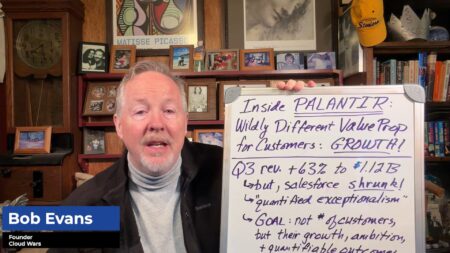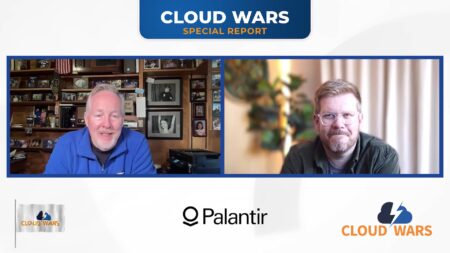One of the toughest challenges CXOs face is to develop a culture of accountability and responsibility for revenue that is embraced throughout the organization. While new products, pricing, or a new channel strategy might generate revenue growth, nothing is as powerful as creating an overarching culture of revenue growth in a company. The challenge is that if it doesn’t currently exist in your organization, how do you create it?
In leading business transformations, I’ve found that asking managers across the organization the simple question, “Who’s responsible for revenue?” can be a powerful diagnostic. In turnaround situations where businesses are declining, the most common answer is, “Sales is responsible for revenue. That’s not my job”.
Certainly, for non-sales functions, there is some truth in this answer. At the same time, the response also suggests a lack of cultural awareness about how revenue is generated, how all the functions of a healthy company support revenue, and how revenue growth is a key metric that everyone in a company should take responsibility for.
If you’re looking to establish or accelerate a revenue-driven culture in your company, here are some key steps to take.
Ensure All Employees Know How Your Company Gains Revenue
A foundational step in creating a revenue-driven culture is to assure everyone in the organization understands how the company makes money. At face value, this might seem too simple. It is deceptively simple, however.
The top two findings from interviews with employees in failing organizations are:
a) Not understanding the fundamental business model
b) Not understanding what was expected of them
Leaders need to assure that every employee in the company has a basic understanding of how the company makes money and how their role contributes to the process. There are really three steps in educating everyone on how your company makes money:
- What are the core products and services that customers buy from your company and how do they make money? Essentially, understanding the core business model.
- How does each role in the company support this process? This implies clarity on what’s expected of each role.
- What are the basic financial objectives? For instance, this can include growth in new customers, growth with existing customers, and streamlining operations.
In my experience, a sustained communication and education process to assist everyone in the organization to better understand how the company makes money can generate rapid and sustained benefits.
The Customer Experience Audit
The next step in establishing a revenue-driven culture is to map your customer experience within your company. Not the experience you aspire to have but actual experience customers have with your company.
What happens when a customer expresses interest in your product or service? What steps do they go through? What does your customer onboarding experience look like? How many steps are there in the process? How many people are involved? How well-coordinated is it?
In my latest role, leading the turnaround, growth, and successful sale of thomasnet.com, doing a customer experience audit was eye-opening and transformative. We discovered that our new customer onboarding process had no less than 4 hand-offs, in each of which the customer was asked the same set of questions by 4 different functions inside the company. Each of these steps had been valuable when initially set up but the process had become too siloed, lacked coordination, and most importantly was a poor customer experience.
After doing a cross-functional review, it became clear that we could refine and smooth this process and create a far better customer experience. Something else happened though that was even more impactful. Employees in non-sales functions realized how important their role was in our customers’ experience. From billing to product development to marketing and customer support through to our receptionist, everyone had a light bulb moment realizing they had the ability to positively impact customers and in turn company revenue. This leads us to the next step in the process…
Myopic Customer Focus
Growth companies with revenue-driven cultures are customer-obsessed. Solving customer problems, listening to, and dazzling customers are all hallmarks of revenue-driven cultures. Growing revenue in business is about delighting customers and it starts with a myopic focus on customers. Most every business has a slogan about customers. “Customer First”, “Customer is King”, “Our Customer is our Business”.
Customers are smart, however, and know when this is simply sloganeering and when it is a genuine part of a company’s culture. Resist developing a rallying cry and focus instead on developing a sustainable culture of true customer focus. Start by encouraging a natural sense of curiosity about customers within your organization. Share insights about what problems your product or service solves. Invite customers to share their experiences—both good and bad—with your company via video calls, in-person visits, and blog posts from senior management. Consider starting an NPS (Net Promoter Score) survey with your customers and share the scores and any direct feedback with the company. Celebrate and reward employees who go above and beyond to help a customer.
My advice here is to think big but start small. Start by sharing customer insights across your company and acknowledging and celebrating examples of customer focus, then build from there.
One last point here is to lead by example. C-Level executives who regularly meet with customers are modeling a myopic customer focus. My guide for CXOs is to spend at least 25% of your time in direct interaction with customers.
Everybody Sells. Everyday.
Some of the best revenue ideas I’ve ever received came from non-sales people.
Someone in billing understood we were making it difficult for customers to renew their programs. A new feature that ultimately became a recurring revenue service, suggested by a CTO. A receptionist noticed a pattern in the calls coming into the main switchboard that resulted in a new customer dashboard and the beginning of a self-service offering.
Openly acknowledge, in your ongoing communication, that everyone in the company has the opportunity to positively impact a customer’s experience and, in turn, impact revenue for the organization.
Jonathan Bush and Todd Park founded Athenahealth in 1997 to create a practice management system, enabling doctors to better manage the increasingly complex health insurance system. They quickly found that senior executives in the insurance or medical practice industry really didn’t know exactly how the medical claim process worked. They had to go 6-levels down in a hospital group to find a woman in billing named Sue Henderson who understood the opaque process of submitting claims. Ultimately, they ended up modeling their software after Sue’s knowledge. Athenahealth was sold in 2018 for $5.7 Billion.
Make sure you are enabling your Sue Henderson and encouraging all employees to share their knowledge on how your company can better serve customers and grow revenue.
Self-Service Technology
Large, technologically advanced companies like Amazon, Google, Walmart, and other large retail and financial services firms, have embraced self-service technology (SST) and in turn, raised the expectations for the customer experience.
The killer app in business today is self-service technology and it’s quickly becoming industry standard. SSTs, like message BOTS, automated form-fill, food delivery, ride-hailing, and even self-service parking are allowing customers to get what they want faster and easier, enabling businesses to sell more and increase revenues.
Frankly, it’s getting harder to find a business of any sort that isn’t utilizing some form of SST. And don’t think that the demand for self-service tech is only in the business-to-consumer marketplace. The use of SSTs in business-to-business is accelerating rapidly changing the way we market, sell, bill, provide customer service and assess customer sentiment.
Want more tech insights for the top execs? Visit the Leadership channel:










